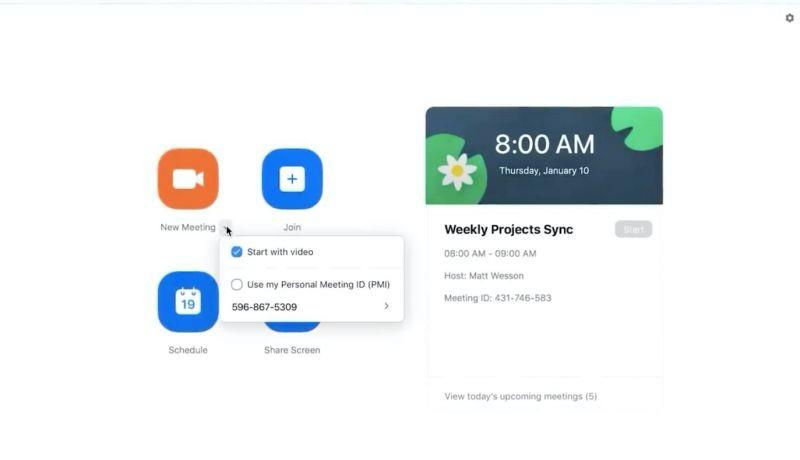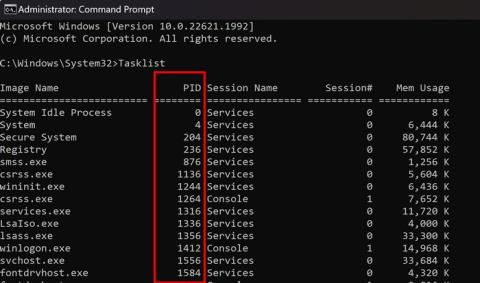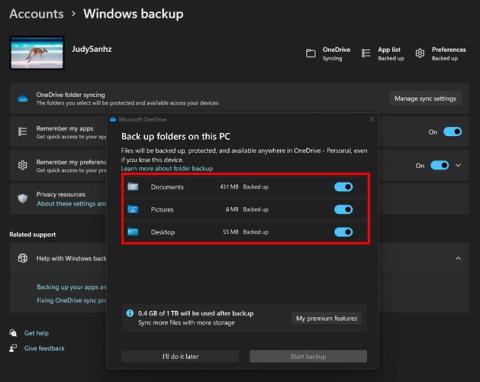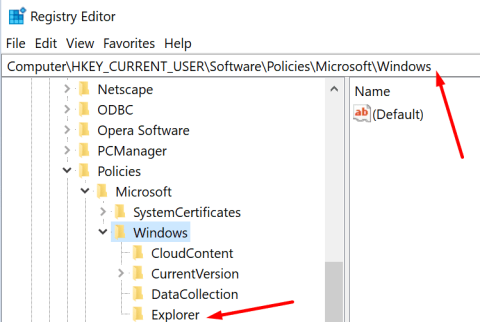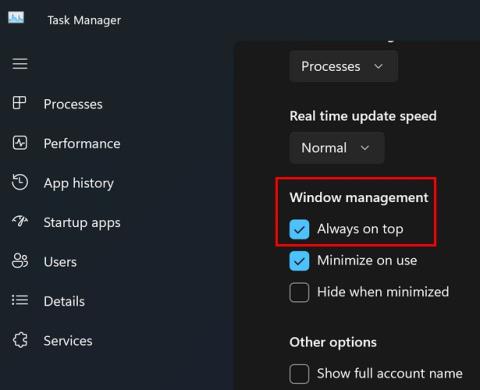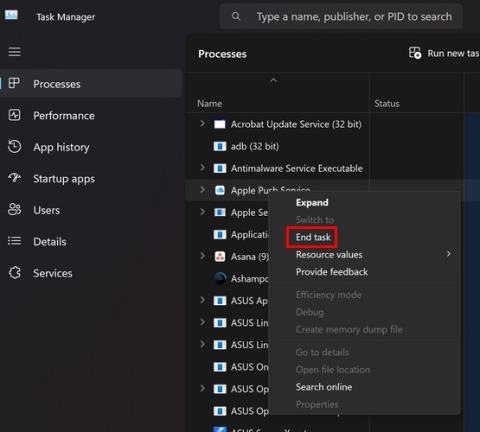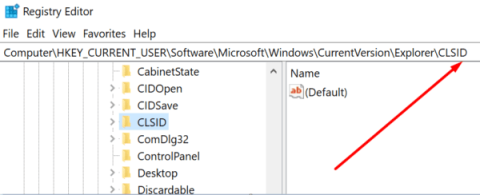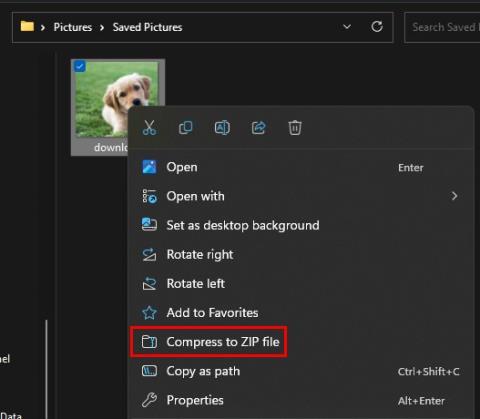Windows 11 está crecendo lentamente cunha mala reputación entre as persoas por ter un rendemento inferior en comparación co seu predecesor. Primeiro, estaban os novos requisitos para o arranque seguro e o TPM 2.0, o seguinte foi o rendemento diminuído ao xogar, e agora varios usuarios afrontan problemas cos seus adaptadores de rede, en concreto a liña Killer Wireless de Intel.
Se ti tamén tes problemas co controlador ou non podes facer funcionar a túa tarxeta Killer Wireless, aquí tes todo o que necesitas saber sobre iso.
Contidos
Que é Killer Wireless 1535?
Desenvolvido por Rivet Technologies e posteriormente comprado por Intel, Killer Wireless 1535 é unha WLAN ou tarxeta de rede desenvolvida para sistemas orientados a xogos. A lista de tarxetas Killer Wireless ten unha longa lista de funcións, incluíndo Bluetooth 4.1 xunto co soporte de banda dual para 2,4 GHz e 5 GHz.
Baseado nun chip Qualcomm, o Killer Wireless usa a tecnoloxía ExtremeRange para conseguir unha ampla gama de conexións, unha perda mínima de paquetes e unha latencia mínima ao xogar xogos multixogador.
Por que Killer Wireless está a causar problemas co controlador no meu PC?
Os problemas con Killer Wireless non son novos. Durante os últimos anos, estivo a causar problemas a varios usuarios en Windows 10, e o cambio a Windows 11 parece empeorar as cousas. Segundo o sitio web de Killer Wireless, os seus controladores non eran compatibles con Windows 11 cando se lanzou, o que provocou problemas de controladores para moitos usuarios que cambiaron a Windows 11.
A serie tamén se enfrontou a un soporte limitado unha vez que foi comprada por Intel e as páxinas de soporte iniciais que detallaban as correccións foron eliminadas do sitio por completo.
Microsoft tamén mencionou que podería deberse a un erro de rede en Windows 11 que afectou a UDP. Os controladores obsoletos e a ausencia de parches de compatibilidade entre o software Killer Wireless e Windows 11 poderían ter como resultado importantes problemas de controlador.
Como solucionar problemas co controlador Killer Wireless 1535
Aquí tes unha lista de correccións que se sabe que solucionan os problemas do controlador Killer Wireless 1535 na maioría dos sistemas. Recomendámosche que comeces coas primeiras correccións coñecidas e percorras a lista ata que consigas que a wifi funcione de novo no teu dispositivo. Imos comezar.
Método #01: Desactivar a priorización
Se podes acceder ao Killer Wireless Control Center, esta é a solución recomendada para ti. A priorización da wifi é unha función do Killer Wireless Control Center que utiliza o motor de priorización de Intel para identificar as solicitudes de rede en curso e priorizalas segundo as túas necesidades e requisitos actuais. Isto axuda ao teu adaptador de rede a satisfacer automaticamente as túas necesidades de conexión de xogos multixogador primeiro e a abordar as tarefas de rede en segundo plano máis tarde.
Non obstante, este motor de priorización fai máis mal que ben. Con controladores desactualizados e soporte limitado, a maioría das tarxetas de rede Killer parecen ter problemas con esta función en Windows 11. Por iso, recomendamos desactivar o mesmo e reiniciar o sistema o máis pronto posible. Se tes un portátil para xogos comprado hai uns anos, é probable que esta sexa a causa dos teus problemas con controladores sen fíos.
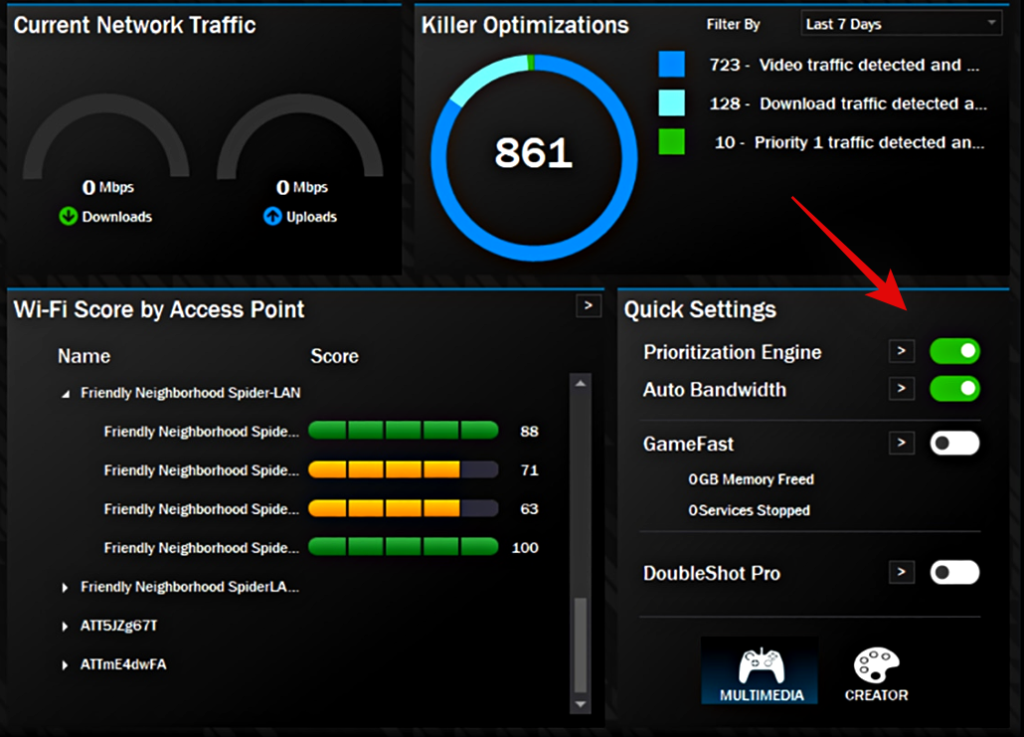
Inicie o Centro de control sen fíos Killer e simplemente desactive o selector de "Motor de prioridades" no widget Configuración rápida. Tamén podes desactivar o mesmo facendo clic en Prioritization Engine na parte superior. Unha vez desactivado, reinicia o teu sistema e a wifi debería estar a funcionar de novo no teu sistema.
Método #02: seleccione manualmente un controlador diferente para o seu adaptador de rede
Esta é a seguinte corrección recomendada, especialmente se tes problemas de controladores co teu adaptador de rede sen fíos Killer e o controlador falla no xestor de dispositivos. Microsoft adoita estar atento aos seus usuarios e dispón de funcións integradas que poden axudarche a revertir os cambios que poidan romper funcións do teu sistema.
Esta é unha das razóns polas que non só podes revertir as actualizacións do controlador, senón tamén seleccionar un controlador diferente cando se trata de compoñentes como o teu adaptador de rede e o adaptador Bluetooth. Use a guía a continuación para seleccionar manualmente un controlador diferente para o seu adaptador de rede sen fíos Killer. Imos comezar.
Preme Windows + Xno teu teclado e selecciona "Xestor de dispositivos".
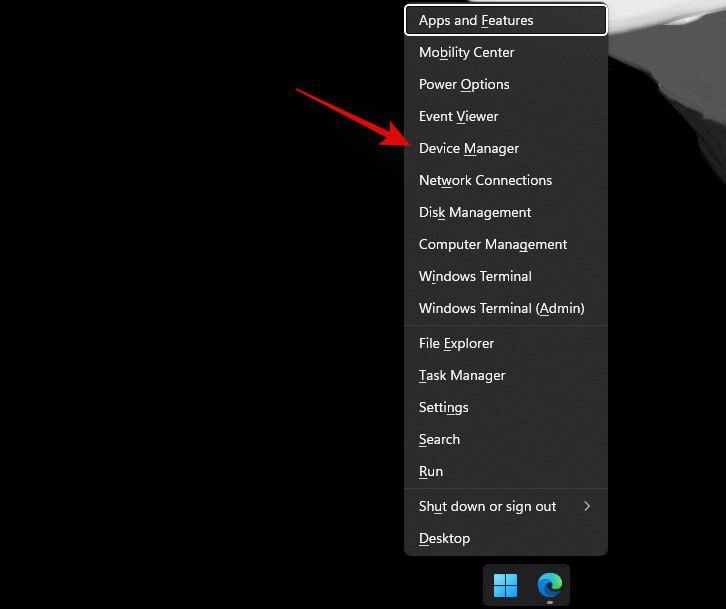
Busca o teu adaptador de rede sen fíos Killer en "Adaptadores de rede" e fai clic e selecciónao. Preme Alt + Enterno teu teclado para abrir a xanela Propiedades.
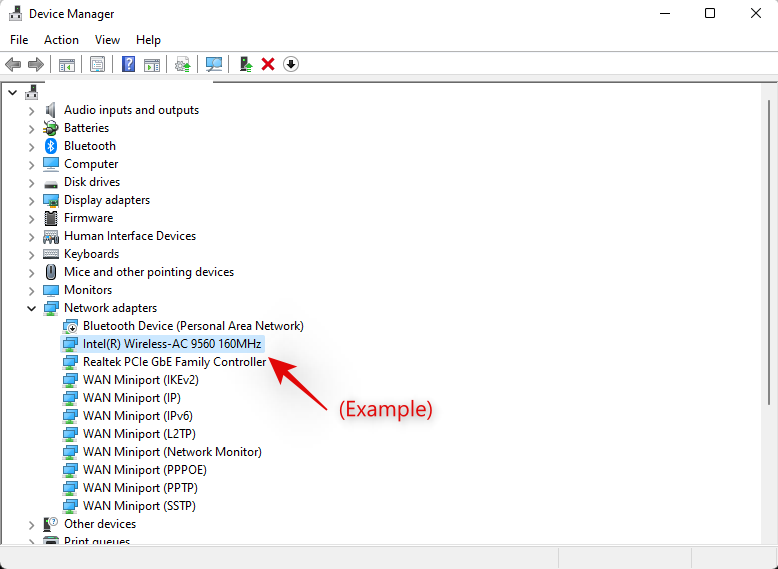
Cambia á pestana "Controlador" facendo clic na mesma na parte superior.
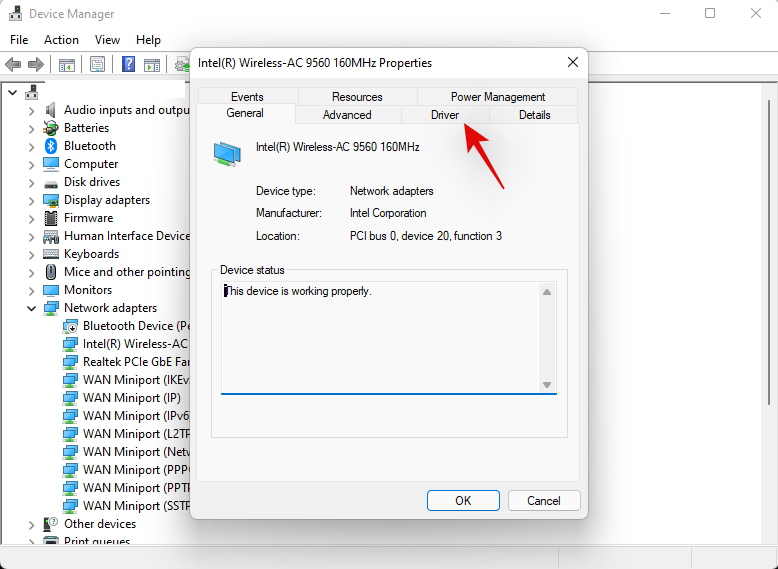
Agora fai clic en "Actualizar controlador".
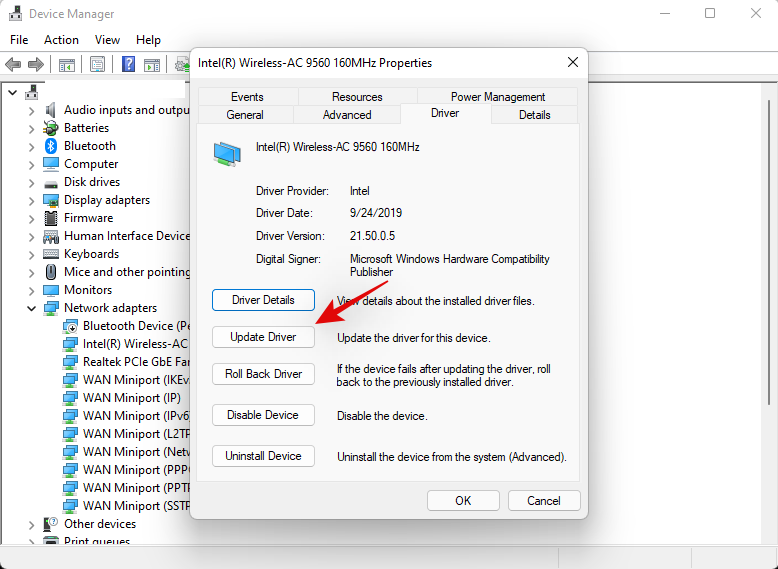
Fai clic en "Buscar controladores no meu ordenador".
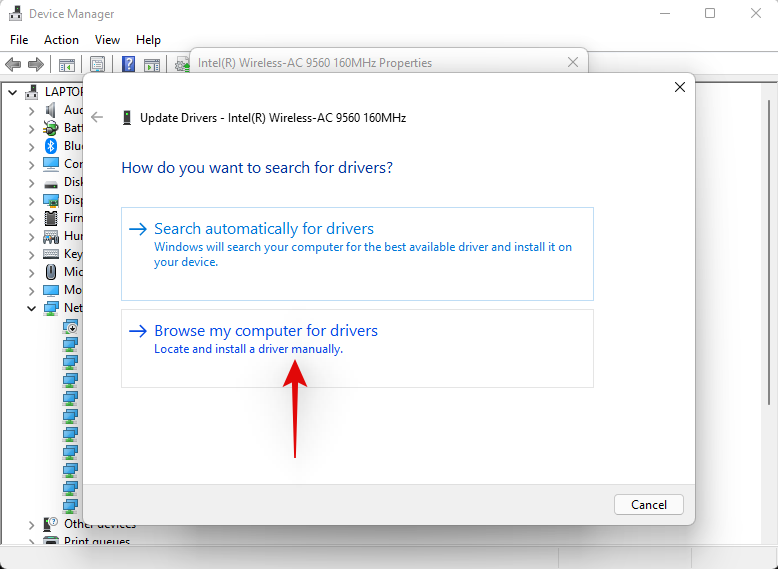
Agora fai clic en "Déixeme escoller dunha lista de controladores dispoñibles no meu ordenador".
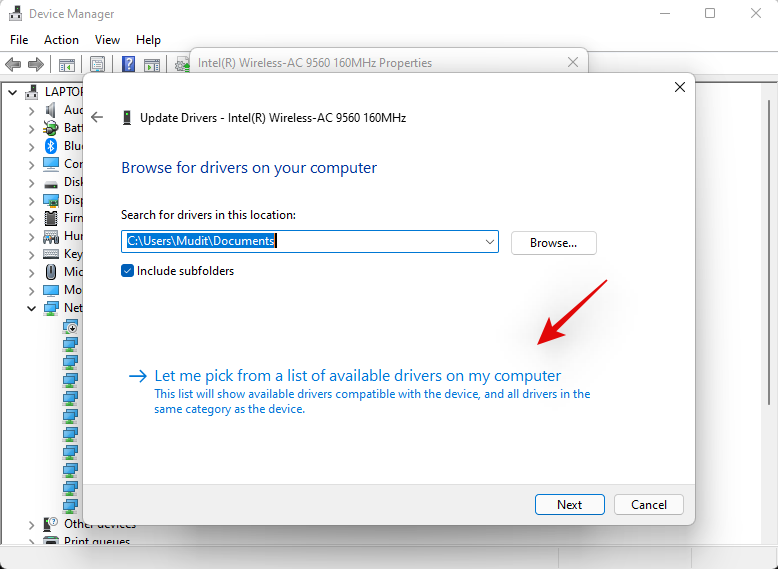
Fai clic e selecciona un novo controlador da lista. Recomendámoslle encarecidamente que intente os controladores de Qualcomm xa que parecen solucionar os problemas de wifi na maioría dos sistemas. Non obstante, podes probalos todos ata atopar o que mellor che funcione.

Fai clic en "Seguinte" unha vez que remates.
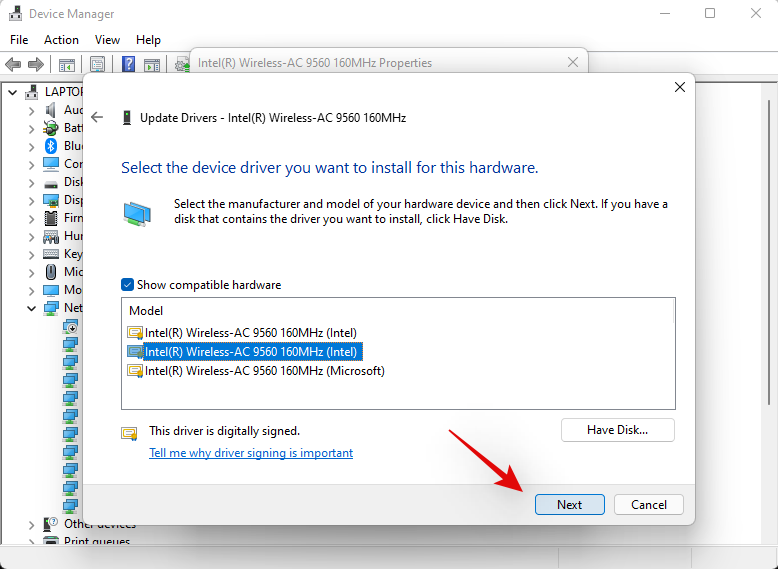
Fai clic en "Pechar" unha vez que remates.
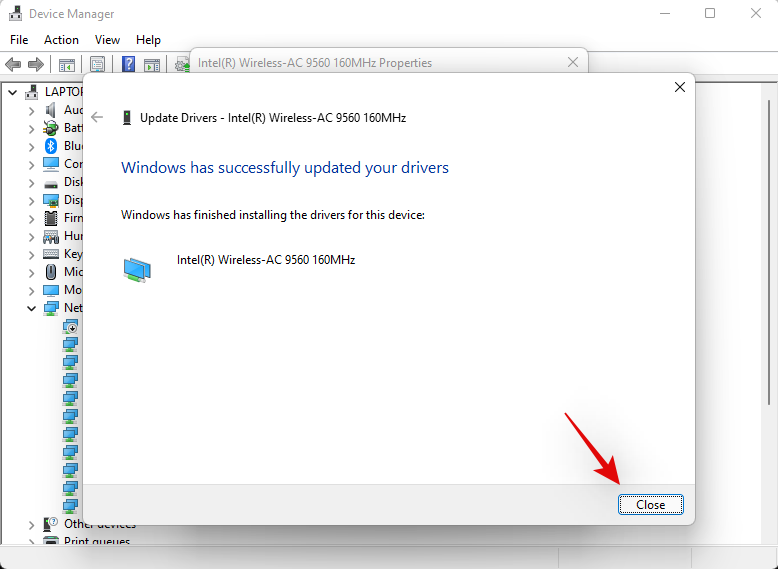
Agora pediráselle que reinicie o seu sistema, prema en "Si" para reiniciar o seu PC.
Unha vez que se reinicie o PC, tenta conectarse de novo a unha rede. Na maioría dos casos, o seu adaptador de rede sen fíos de Killer debería estar agora en funcionamento de novo segundo o previsto no seu sistema.
Método #03: Actualiza Windows
Neste punto, recomendámosche que intentes actualizar Windows 11 ás últimas actualizacións de Cumilitavie que traen correccións oficiais de Microsoft para solucionar os problemas do controlador Killer Wireless na maioría dos sistemas. Use a guía a continuación dependendo da súa configuración actual.
Na versión estable de Windows 11
Cando Microsoft atopou informes de varios usuarios que enfrontaban problemas con Killer Wireless en Windows 11, comezaron a distribuír unha corrección mediante actualizacións acumulativas. Microsoft mencionou que podería deberse a un erro que afecta aos paquetes UDP e provoca unha limitación de Internet.
Recomendámosche que comprobes e descargues todas as actualizacións dispoñibles para o teu PC e asegúrate de que estás executando a actualización acumulativa de Windows 11 vKB5006674 ou posterior.
En Windows 11 Developer Insider Channel
If you are a Windows Insider, then we recommend you update your Windows 11 to Developer version vKB5008918 + USP-721.1116.211.0 or higher. This is the latest fix issued by Microsoft that seems to fix the known network bug affecting UDP connections.
Simply head to Settings > Windows Update > Check for updates to update your Windows 11 to its latest available version.
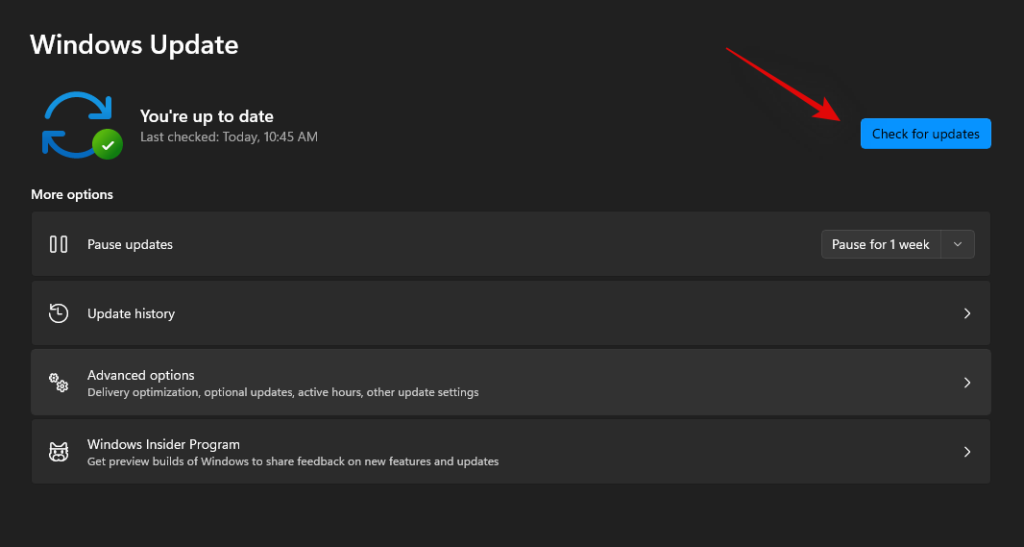
Note: If you haven’t updated your system in a while then you might need to install certain incremental updates before and then subsequently update again to get the latest version of Windows 11 running on your system.
Method #04: Update Wireless Drivers manually
The most obvious solution to fix a Driver issue is to simply update the drivers, so follow the steps below and see if it fixes the problem for you.
Download the latest Qualcomm Drivers from this link.
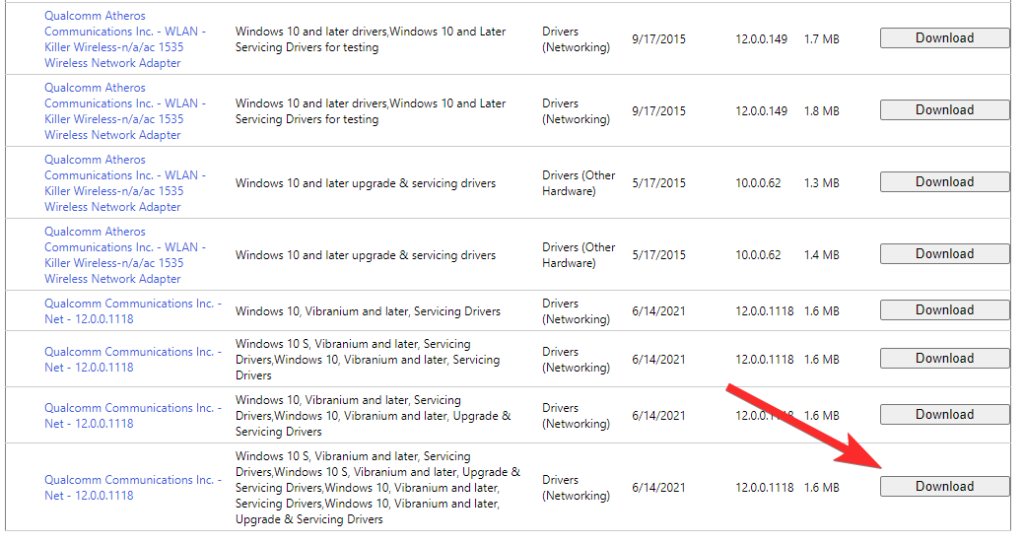
Press Windows + R to open the Run dialog box.
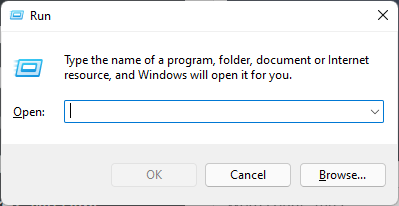
Type the command below in the run box and then hit the enter key or press OK.
devmgmt.msc
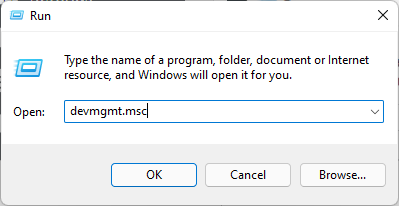
Click on your Killer Wireless Adapter and hit Alt + Enter on your keyboard.

Click and switch to the ‘Driver’ tab at the top and then click on ‘Update Driver’.

Choose the option to Manually look for drivers.
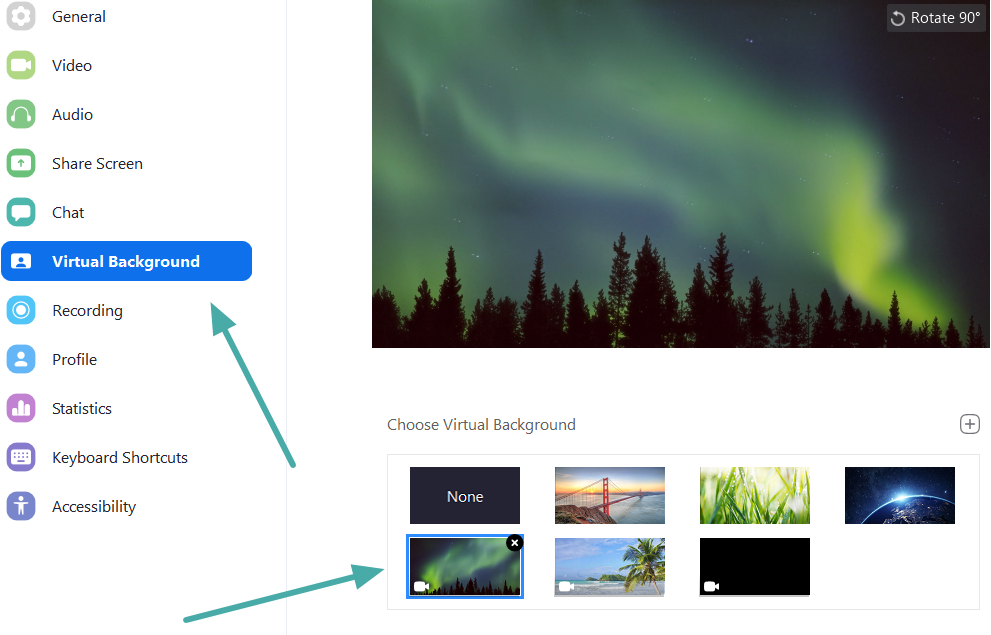
Select the Qualcomm Drivers from the list and finish the installation.
Method #05: Update Wireless Drivers Automatically
You can also automatically update your Wireless Network adapter drivers using the guide below. This isn’t the recommended way for users with pre-built systems and laptops as such units require additional modifications to their drivers to be compatible with your unit. However, if manually updating your drivers using the guide above did not fix this issue then we recommend you use one of the tools below.
Warning: We highly recommend you use third-party software to get driver updates as the last resort. Third-party software usually have questionable privacy policies, and although the tool linked below is open source, you can still end up installing incompatible drivers due to misidentified components which can seriously break your system and in the worst cases, brick your network card altogether.
5.2 Using Intel Driver & Support Assistant
Visit the link above and click on ‘Download now’. Save the file being downloaded to a convenient location.

Launch the .exe file we downloaded in the step above and click on ‘Run’ when prompted.
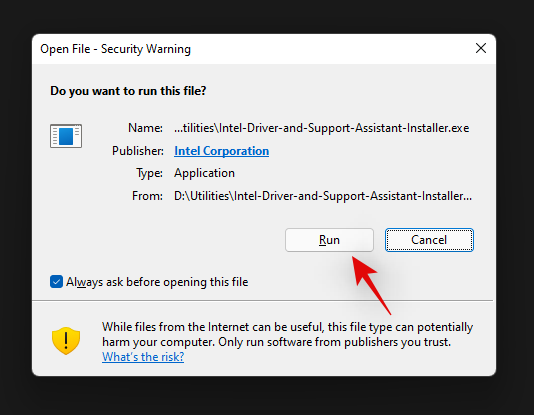
Accept the license terms and conditions and click on ‘Install’.
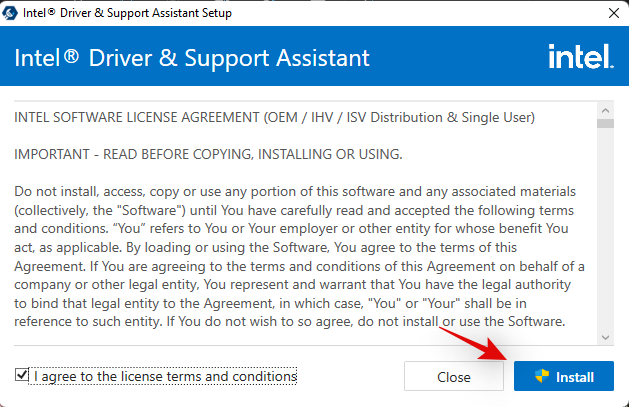
You will now be asked to enter the Product Improvement program from Intel. This allows Intel to collect additional anonymous information from your system to improve its products. This is a completely optional step and hence we recommend you click on ‘Decline’. You can, however, choose to enter this program by clicking on ‘Accept’ instead.
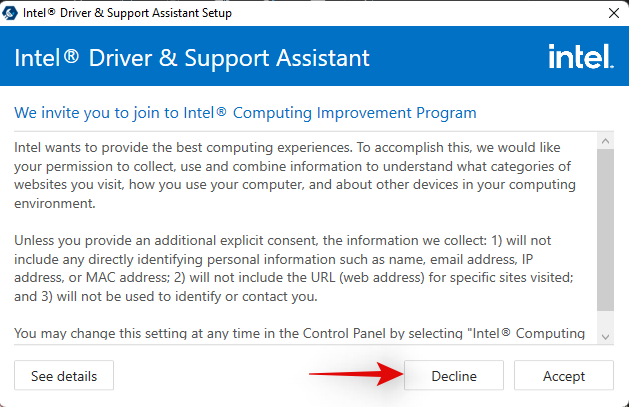
The installer will now download and install all the necessary files on your system. Once done, click on ‘Restart’ to restart your system. Make sure you save any open documents and other data that might be important to you.
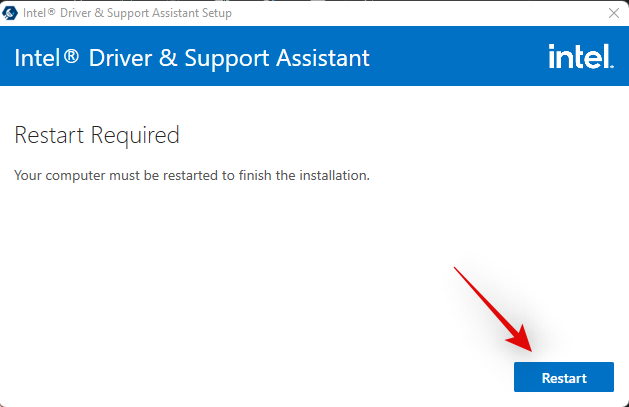
Once your system restarts, launch the ‘Intel Driver & Support Assistant’ from your Start menu.
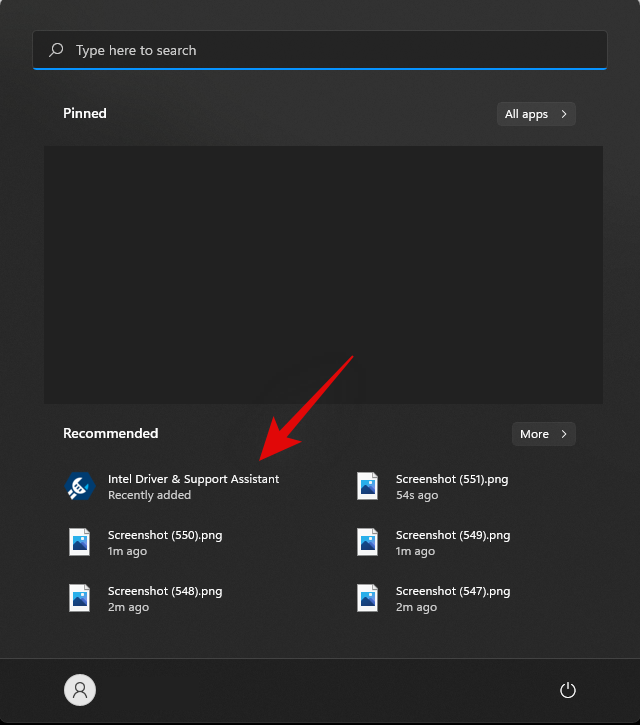
You will now be automatically redirected to a webpage where you can see compatible driver updates currently available for your system. Look for Wireless and Network adapter updates available for your PC and click on ‘Download’ beside it.
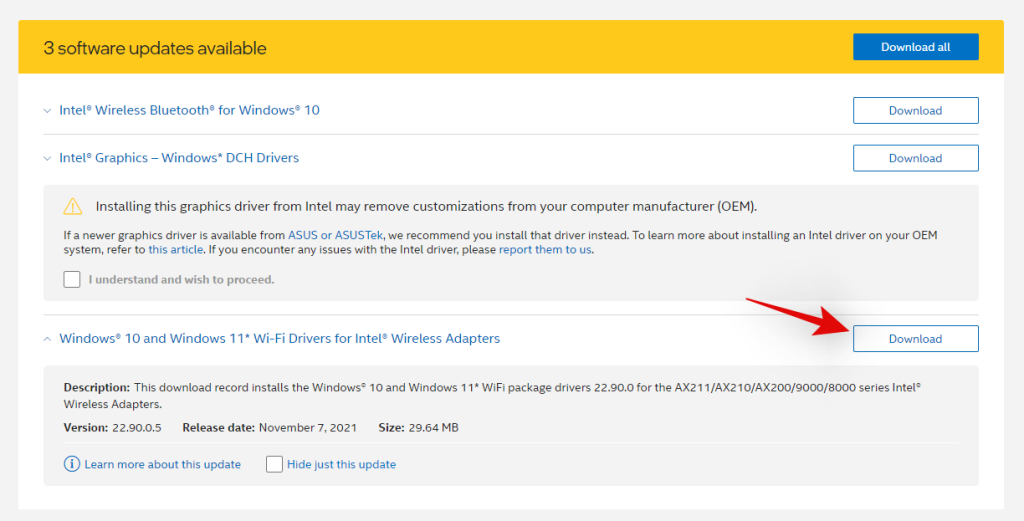
The update will now start downloading and it should now be automatically installed on your system. Once installed, you will be prompted to restart your system. Confirm the changes and restart your system at the earliest.
The latest update for Windows 11 Killer Wireless Network adapter should now have fixed your Wi-Fi issues after a restart.
5.2 Using a third-party software
Windows update provides automatic updates for your drivers, but it won’t always provide you with the updates that you need. Users often make use of third-party software to get automatic updates for the drivers on their PC/Laptop. Follow the guide below to get you started.
Visit the link above and click on ‘Download Latest Version’.

A .zip file will now be downloaded to your local storage. Download it to a convenient location and extract the archive using your preferred utility. Once extracted, double click and launch the x64 .exe file.
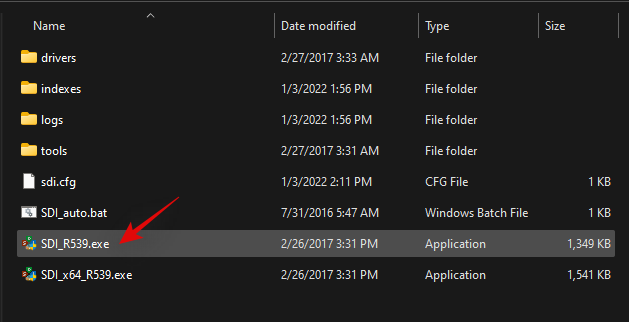
Note: If you have a 32-bit system then you can use the other .exe file instead.
Accept the license agreement by clicking on the same.
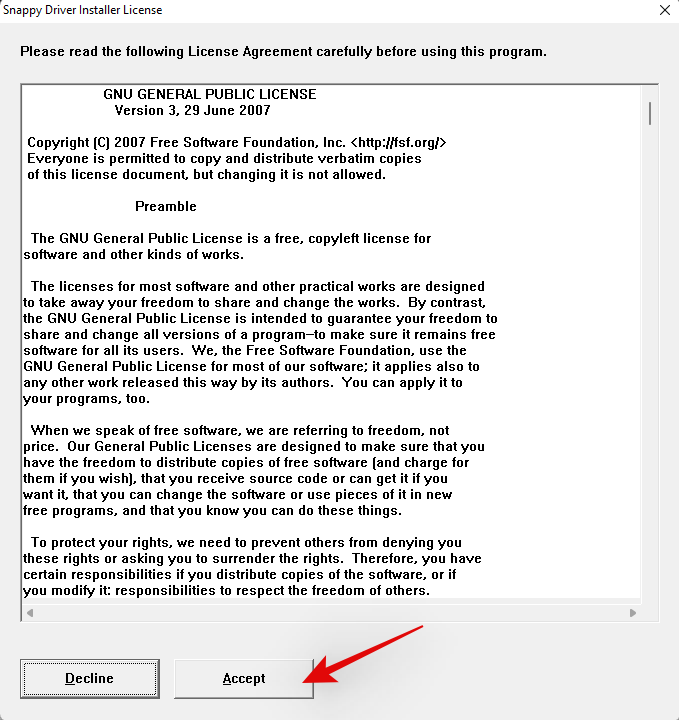
Note: Allow the program to access your network in case you are prompted. This will be used to download the latest drivers currently available for your system.
Now click on ‘Updates are available: SDI NNNNN and NN driverpacks’ at the top.
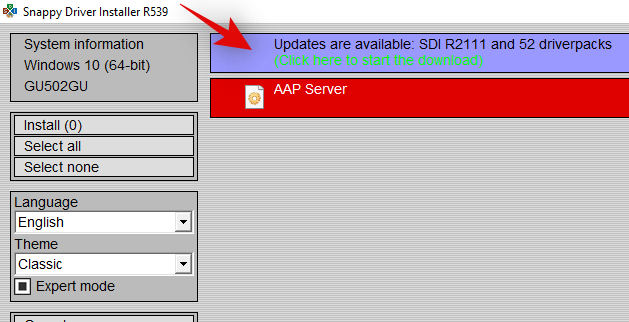
You will now be shown a list of all the currently known driver updates available for your system. Click on ‘Check only needed for this PC’.
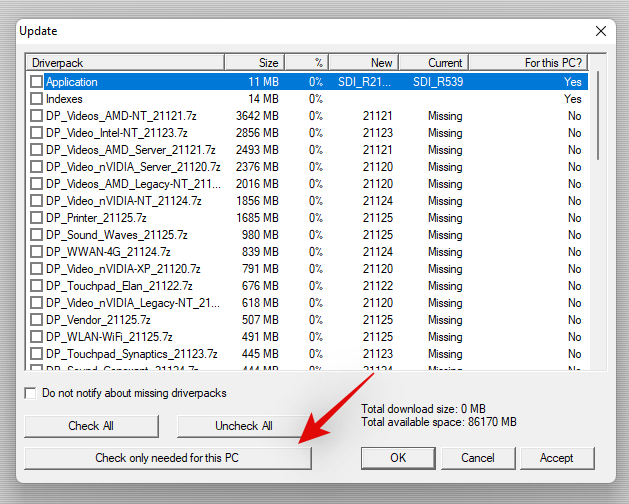
The tool will now automatically detect your components and select the appropriate driver updates for your system. Once selected, look for any Network Adapter-related updates checked in the list. In case any are found, uncheck all the rest of the selections and click on ‘Ok’ at the bottom.
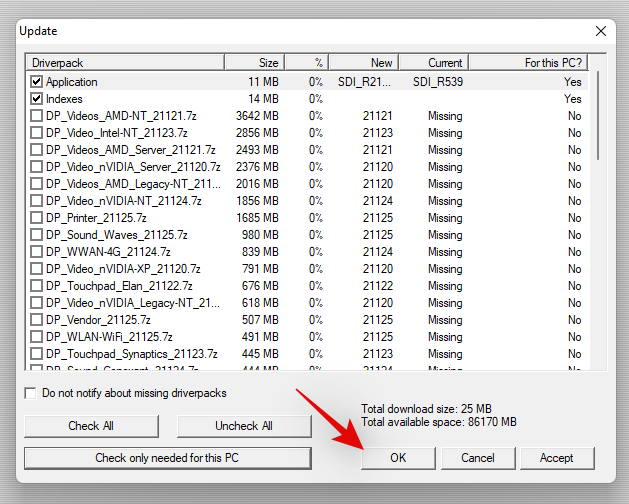
SDI will now automatically download and install the selected drivers on your PC. Once done, close the program, and restart your PC.
If incompatible drivers or missing drivers were the cause of your issue then this should help fix your Killer Wireless Network card. You can now connect to a network and continue using the internet as usual on your system.
Method #06: Disable Killer Wireless Control Center from Task Manager
Make a right-click on the taskbar to open a context menu.
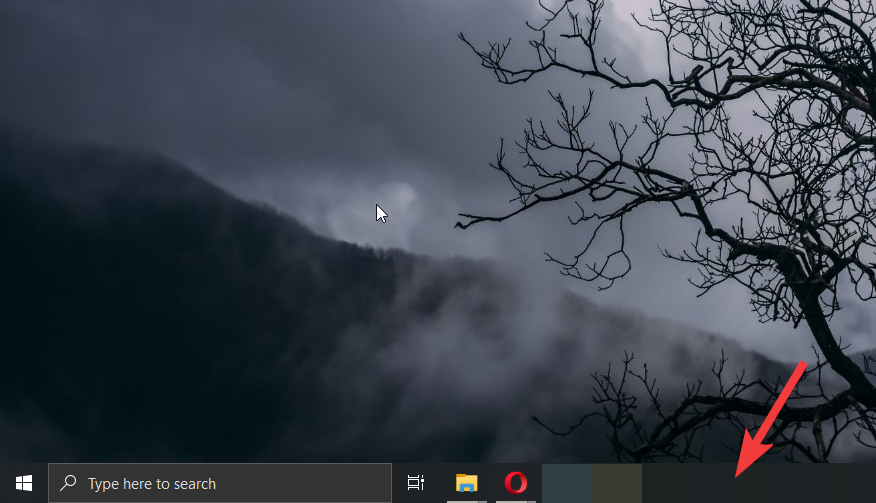
Launch Task Manager by clicking Task Manager from the list.
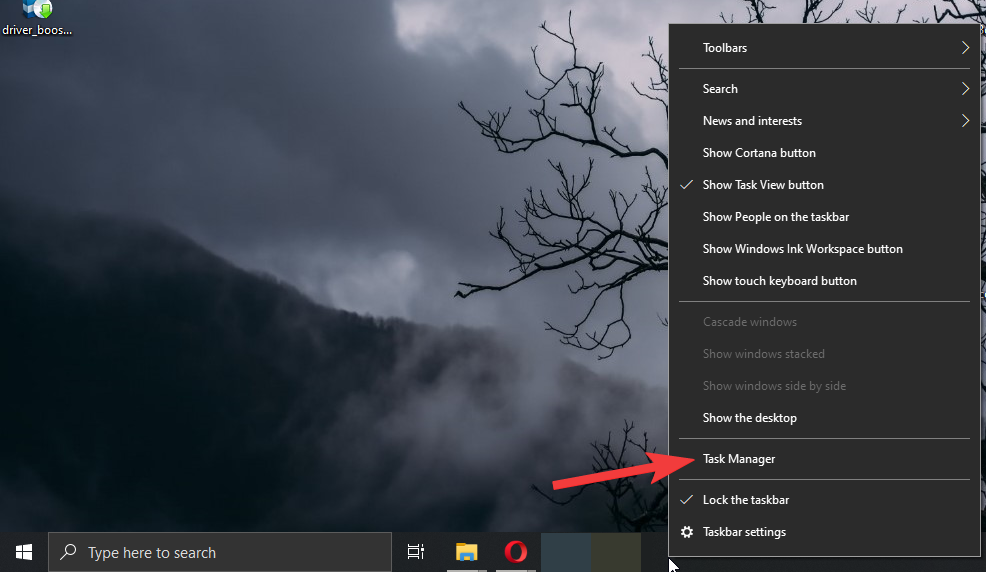
Click on Startup from the top bar.
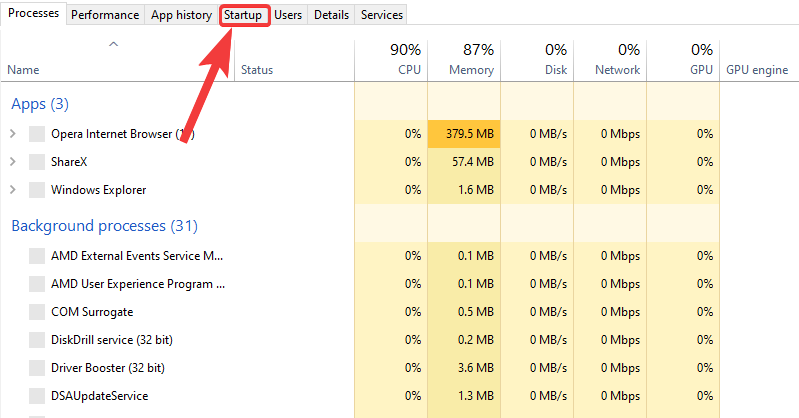
Look for Killer Wireless and make a right-click on it.
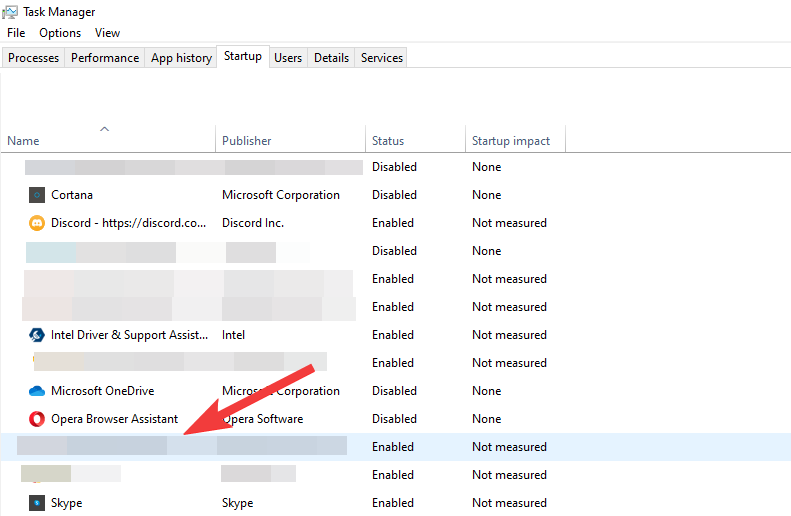
Disable it by clicking Disable.
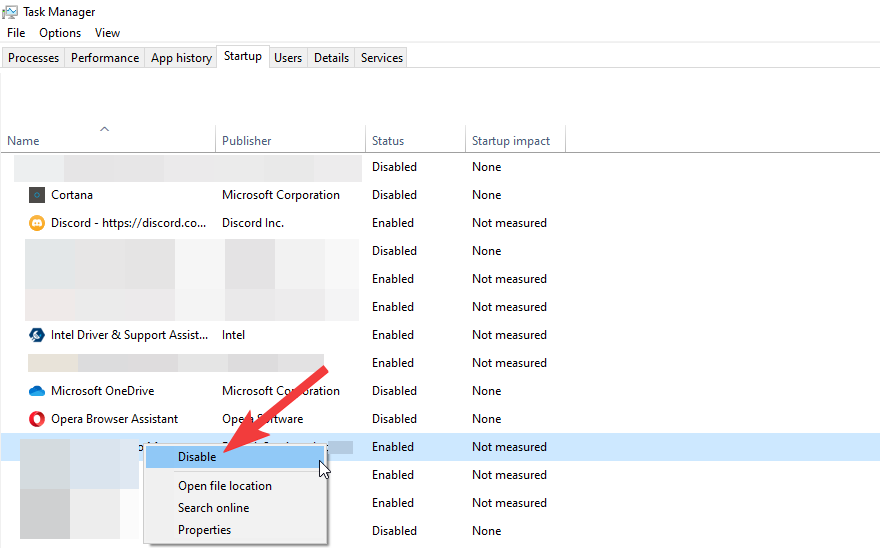
Follow the same process to disable any other Killer Wireless driver or software.
Last Resorts
If by this point you are still facing Network card issues then it could be a hardware-related issue on your system. We recommend you use the following two options in case you are desperate to connect to a network on your system. Let’s get started.
Method #07: Use Ethernet Cable to connect to the Internet
We are sorry if none of the above-mentioned steps worked for you, but rest assured we still have a last resort to help you get back on the internet. Though it may not seem very convenient, you can get the same speed out of your router if you are ready to go old school.
Yes, we are talking about Ethernet cables. You can easily connect your computer with your router via an Ethernet cable and get good internet speed without any hassle. Being a simple wired connection, it won’t have any dependency on the Killer Wireless Drivers and will provide you with the best possible speed without any throttling.
Method #08: Force Remove and Reinstall your drivers
Windows tends to hold and keep basic .inf files for components hidden in the background even if you uninstall them from the device manager. These driver files are used to provide basic functionality when you have no driver files installed or available for your system.
However, if you haven’t cleared your Driver Store in a while then you could have multiple Killer Wireless network adapter drivers on your system which could be conflicting in the background. As a last resort, we will now force remove them from your system, reset the CMOS battery and then install the latest Killer Wireless Network Adapter drivers currently available for your system. Follow the guide below to get you started.
What you need
You will need to make sure that your PC meets the following criteria before proceeding with the guide below as you will use the ability to connect to a wireless network once we force remove all drivers from your system.
- An Ethernet connection: This is the recommended option in case you have a LAN cable lying around. This way you can use the internet to get the latest available network drivers for your system.
- Latest Driver files for your Killer Wireless Network Adapter: You will need offline driver files and installation packages for your system if you do not have an Ethernet cable. We recommend you download the same from your OEM beforehand before proceeding with this guide.
- DriverStoreExplorer: This is a community-built tool that allows you to force remove .inf files from your system. We will be using this to remove all your network adapter drivers.
Force Remove Drivers
Visit the link above and download the latest archive for DriverStoreExplorer linked on the page.
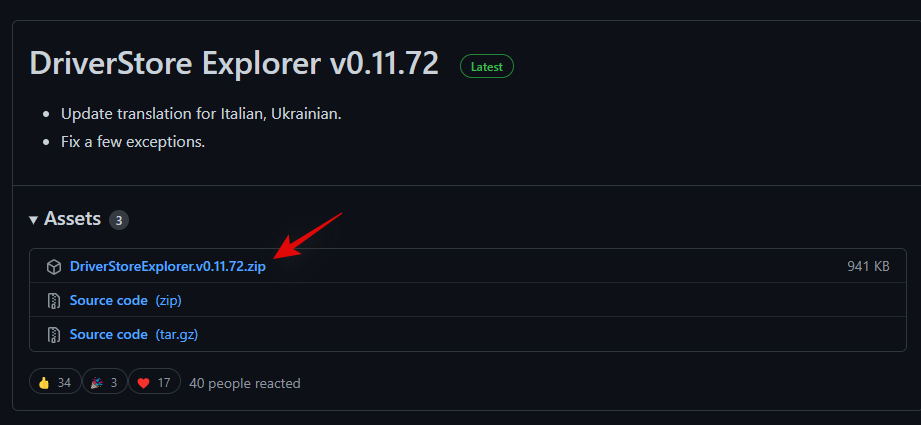
Once downloaded, extract the archive and launch ‘Rapr.exe’ as an administrator.
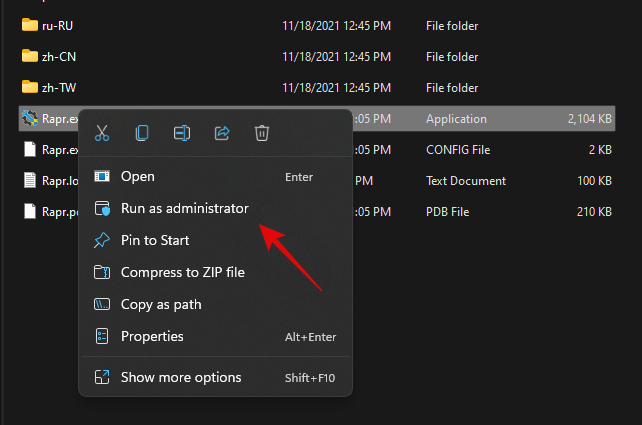
The tool will take a few moments to scan your driver store and then show all the drivers installed on your current Windows setup. Click on ‘Driver Class’ column at the top to sort your drivers by their class.
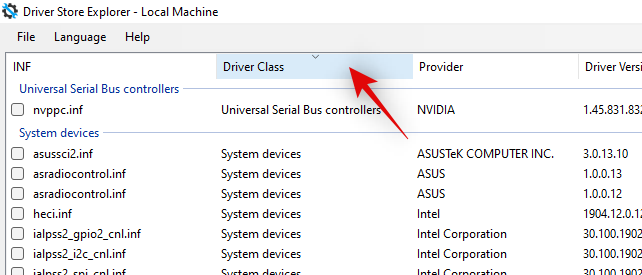
Now look for ‘Network adapters’ in this list and check the box for each driver that you find.

Warning: Ensure that you are only selecting drivers that you wish to remove. DriverStoreExplorer is quite a thorough tool that manages to bypass most failsafes when removing drivers, hence if you end up removing the wrong drivers then you can face serious hardware failure issues with your system.
Check the box for ‘Force Deletion’ on your right.
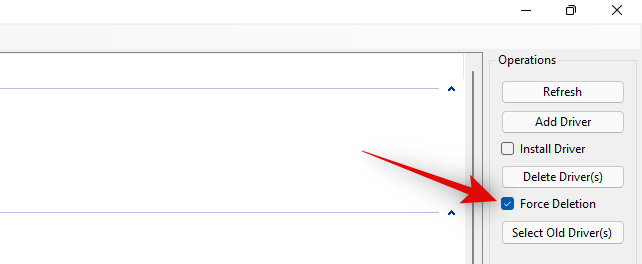
Subsequently click on ‘Delete Driver(s)’.
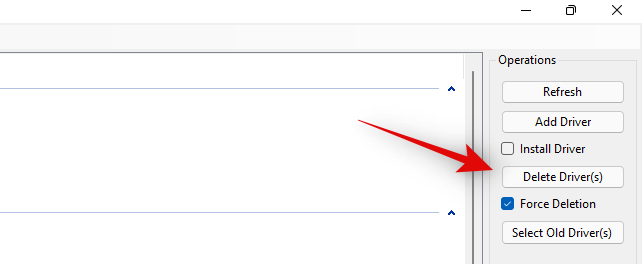
Click on ‘Ok’ to confirm your choice. The selected drivers will now be deleted from your PC. Once done, close the app and turn off your system at the earliest.
Reset CMOS Battery
We now recommend you reset your CMOS battery. This is a recommended step that requires you to open up your PC or laptop to reset the CMOS battery. As this is an advanced step and you are hesitant to open up your PC then you can skip it and continue with reinstalling your drivers using the guide below.
A CMOS reset helps reset your system components as well as drain capacitors that could be malfunctioning on your board. A CMOS reset will help your network adapter get a fresh start which when combined with a fresh driver update should help get everything working again. Use this comprehensive guide by us to reset your CMOS battery.
Reinstall latest drivers
Now it’s a matter of simply installing your latest Killer Wi-Fi drivers. If you have an installer package then simply double click the file and follow the on-screen instructions from your OEM to install the latest drivers on your system. However, if you have .inf files then you can use the guide below to manually install your drivers.
Press Windows + X on your system and click on ‘Device Manager’.

Click on ‘Add drivers’ at the top.

Click on ‘Browse’ and select the folder on your local storage containing your .inf files.

Once selected, click on ‘Next’.
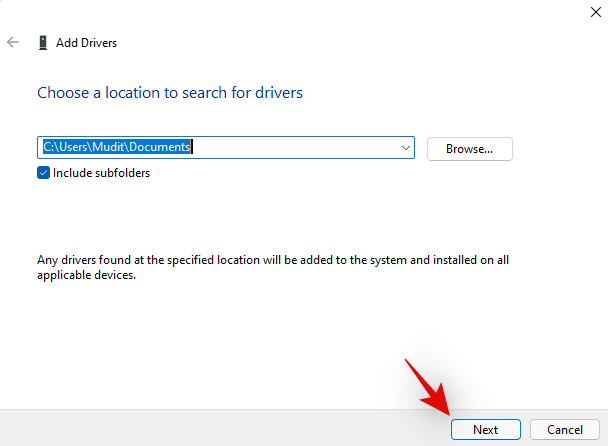
The .inf files will now be installed on your system. Once done, click on ‘Close’.
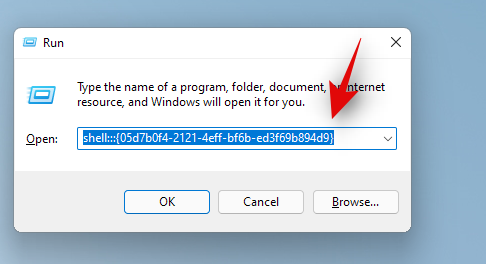
We now recommend you restart your system for the changes to take effect. Once restarted, try connecting to a wireless network. If everything is working as intended then we recommend you skip the optional section below. However, certain network adapters need you to select a different driver depending on your manufacturer. Use the guide below to help you with this process.
Manually select your driver (optional)
If you wish to manually select a different driver then we recommend you use the guide at the top of this post. Multiple drivers for the same network adapter can exist depending on its components, specifications, and skew. Selecting a different one will help you fix driver conflicts and help you get everything back up and running on your system.
FAQs
With so much to do and fix, you are bound to have a few questions. Here are some commonly asked ones, to help get you up to speed with the latest developments.
Killer Wireless won’t work on Windows 11. Can I fix it by switching back to Windows 10?
Yes, you should be able to fix it by switching back to Windows 10. But you should try the solutions mentioned above and see if it fixes the problem. If your problems are fixed, then you won’t need to go through the pain of downgrading back to Windows 10 and would be able to enjoy the fresh feel and latest features of Windows 11.
Is it safe to change network cards to fix Killer Wireless issues?
Yes, it is safe to change the network card to fix Killer Wireless issues. But make note that opening your PC or Laptop on your own can void its warranty and wrong handling of the components can give you a minor to major level shock and could also damage your PC/Laptop. It is always advised to get any such components replaced by trained professionals.
Would uninstalling all Killer drivers fix the slow internet speed?
Yes, uninstalling the Killer Drivers might reset your internet speed. But this will be a temporary fix, cause Windows will anyway install the drivers to make the services function correctly. Rather than uninstalling, you can disable the drivers from launching by following the steps mentioned in the guide above.
Agardamos que esta publicación che axude a solucionar os problemas de Killer Wireless Driver no teu sistema. Se tes algunha suxestión, non dubides en deixalas na sección de comentarios a continuación.
RELACIONADO:













































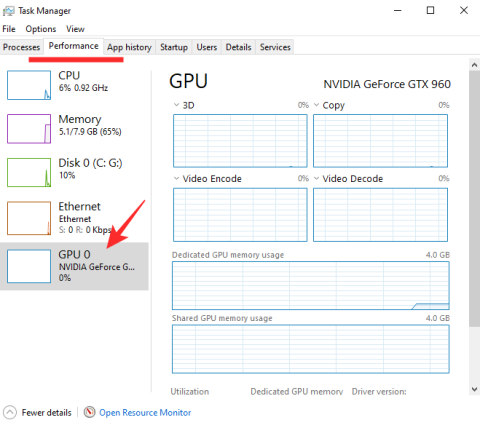
![Como evitar o erro prohibido de Zoom 403 [Actualización: Zoom solucionou o problema] Como evitar o erro prohibido de Zoom 403 [Actualización: Zoom solucionou o problema]](https://blog.webtech360.com/resources8/images31/image-2646-0105182808274.png)

